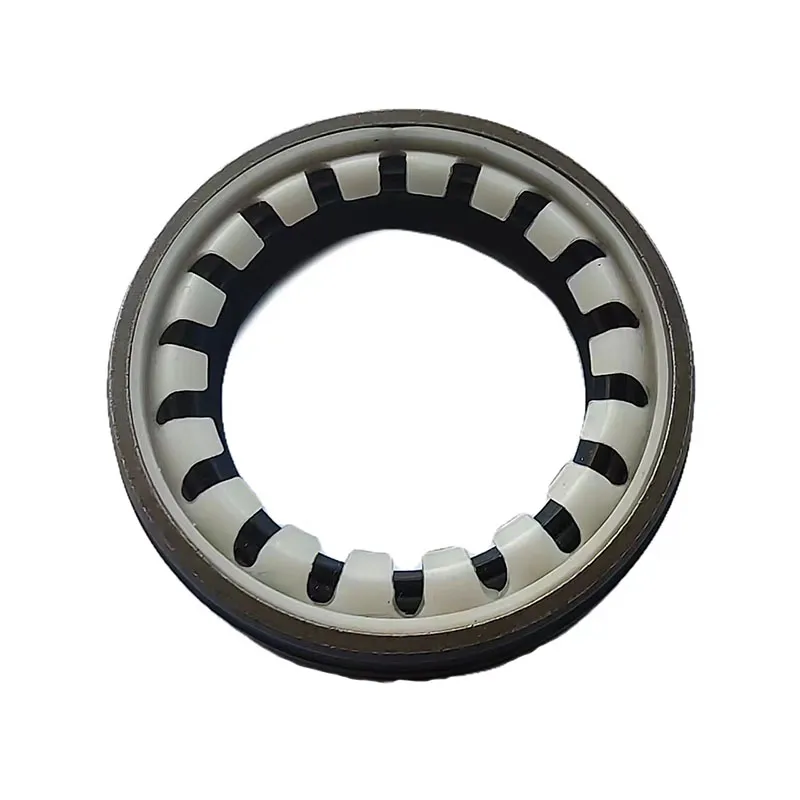high pressure seal
High Pressure Seals Ensuring Efficiency and Safety in Critical Applications
In many industrial applications, the integrity and effectiveness of sealing technologies are paramount. High pressure seals are engineered components designed to maintain a secure barrier between parts in high-pressure environments. These seals play a vital role in various sectors, including oil and gas, chemical processing, aerospace, and automotive industries. Their primary function is to prevent leaks, which can lead to operational inefficiencies, safety hazards, and costly repairs.
High pressure seals are typically made from advanced materials that can withstand elevated pressures and harsh operating conditions. Common materials include elastomers, metals, and composite materials. Each type of seal material exhibits unique properties, making it suitable for different applications. For instance, fluorocarbon elastomers are often used for their chemical resistance and ability to maintain their sealing capabilities under extreme temperatures. On the other hand, metal seals are preferred in applications where very high pressures or temperatures are involved, providing a more robust and durable solution.
One of the most common types of high pressure seals is the O-ring. O-rings are simple yet effective circular seals that can be used in various setups, such as pumps, valves, and cylinders. When an O-ring is compressed between two surfaces, it deforms and fills the gap, creating a tight seal. The effectiveness of an O-ring in high pressure applications depends on factors such as the material choice, size, and the groove design. Engineers must carefully consider these factors during the design phase to ensure optimal performance.
Another popular high pressure sealing solution is gasket seals. Gaskets are flat seals that fill the space between two or more mating surfaces. They are typically used in flanged joints and are crucial in preventing fluid leakage. Gaskets come in various shapes and materials, allowing for versatility in design. They can withstand high pressure and temperature variations, making them ideal for critical industrial applications.
high pressure seal

In addition to O-rings and gaskets, high pressure seals also include lip seals, which are often used in rotary applications. These seals feature a flexible lip that makes contact with a rotating shaft, preventing the escape of fluids while allowing for smooth movement. Lip seals are commonly found in gearboxes, pumps, and other machinery that operates under pressure.
Designing high pressure seals requires a deep understanding of the operating conditions, including temperature, pressure, and the nature of the fluids involved. Engineers must analyze these parameters to select the right material, geometry, and surface finish for the seals. The correct design and installation of seals are crucial to ensuring long-lasting performance and minimizing maintenance needs.
One significant challenge in high pressure sealing applications is material degradation. Over time, seals can wear out due to factors such as thermal cycling, chemical exposure, and mechanical stress. Regular inspections and maintenance are essential to identify signs of wear and replace seals before leaks occur. Advances in material science and engineering are continually leading to the development of more resilient seal materials that can better withstand the challenging conditions of high pressure environments.
In conclusion, high pressure seals are critical components that ensure the safety and efficiency of various industrial processes. By preventing leaks, these seals safeguard equipment, reduce downtime, and contribute to overall operational efficiency. As industries continue to evolve, the demand for advanced sealing solutions that can withstand ever-increasing pressure and harsh environments will only grow. Ongoing research and innovation in seal technology will be vital in meeting these challenges and supporting industrial growth in the future.
-
The Ultimate Guide to Car Repair Kits: Tools and Essentials Every Driver Should Own
News Aug.01,2025
-
The Complete Guide to Oil Pan Gaskets: Sealing Engine Leaks the Right Way
News Aug.01,2025
-
Preventing Oil Leaks: A Complete Guide to Oil Pan Gaskets and Drain Seals
News Aug.01,2025
-
Everything You Need to Know About Oil Pan Gaskets and Drain Plug Seals
News Aug.01,2025
-
Essential for Car Owners: How to Use a Car Repair Kit to Deal with Minor Breakdown
News Aug.01,2025
-
Comprehensive Guide to Engine Oil Sump Gaskets and Related Seals
News Aug.01,2025
-
The Ultimate Guide to Boat Propeller Bearings and Trailer Wheel Bearings
News Jul.31,2025
Products categories















